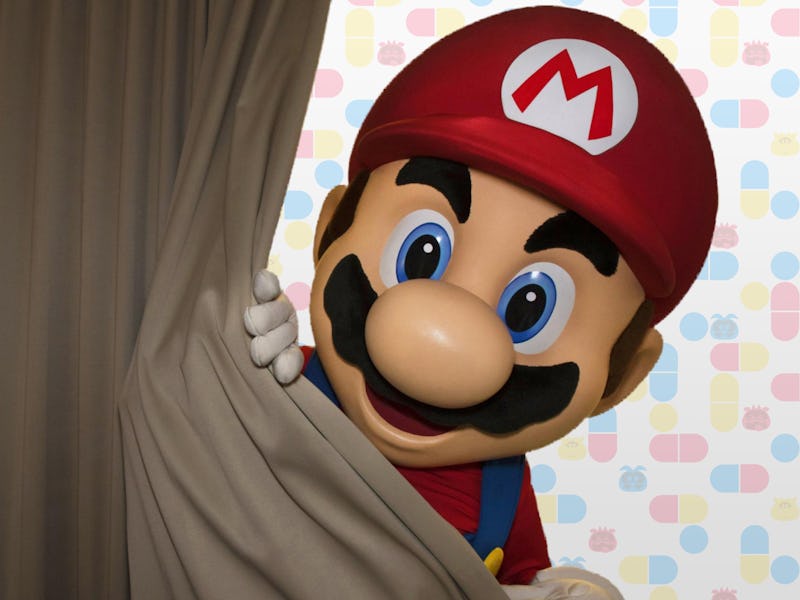You need to play the most addictive Mario game on Nintendo Switch ASAP
The Doctor will see you now.

By the late 1980s, the still-young video game industry had settled into a status quo. Japan reigned supreme, with innovations also happening in the United States and Europe. One place that was off-limits to the industry, and capitalist society in general, was the Soviet Union. The U.S.S.R. had its own small gaming industry, but nothing could have prepared Nintendo for the craze that Tetris became.
When that happened, Nintendo had to act fast. By 1989, the company was quickly trying to acquire the game, which remains one fo the most popular of all time — even today. A complex legal battle ensued, but Nintendo eventually won the rights to distribute Tetris on Game Boys and on consoles.
Soon afterward, it released a variation on the puzzle craze that would have a life of its own.
It’s called Dr. Mario.
Dr. Mario is an intense and addictive Tetris-type puzzle game.
If you’re a paid Nintendo Switch online subscriber, you can play Dr. Mario right now by downloading the Nintendo Entertainment System app.
While there’s not much available online about Dr. Mario’s development, the similarities between the game and Tetris are obvious (so obvious, in fact, that Nintendo began packaging them together). Both games feature falling tiles and a matching system to remove the blocks. In Dr. Mario, the player’s goal is to match the tiles with their corresponding colors, almost like Dominos. Line up four matches, and the tiles disappear. Failure to match them means they start piling up, and if they reach the top the game is over.
Alexey Pajitnov, the programmer behind Tetris, was inspired by the common geometric puzzle game known as pentominoes. “You could get three of these geometric games for a rouble in Moscow toy shops,” he once recalled in an interview. The games come with shapes in different sizes and colors which can mix and match with each other. Tetris adds a level of randomization and strategy to pentominoes.
Dr. Mario offers a couple of crucial variations.
Dr. Mario gameplay.
It plays into its medical theme heavily — the game was initially called Virus in its earliest prototypes. In the game’s manual, Mario introduces himself to players as someone who has gone on some pretty wild adventures in recent years but is now a doctor. “Now, believe it or not, I work in the virus research lab at the Mushroom Kingdom Hospital,” he says.
I don’t particularly believe this, Mario. How have you gone from a plumber to a research doctor? Is there a Mushroom Kingdom Medical School? Why is Princess Toadstool, who ostensibly rules this kingdom, your nurse? Where are her accreditations? Wouldn’t she run this hospital in an administrative capacity?
Outside of this credulous healthcare system, the medical theme plays very much to Dr. Mario’s strengths. There are only pill shapes in the game, which are housed inside an old-timey medicine bottle shape. These pills, called Megavitamins, have two color options and occasionally are the same color. But there are also viruses on the board, mischievous little sprites who need to be cleared by eliminating them with their specific color.
The viruses add a challenge to the board, as well as a sense of urgency planning. A player can clear as many pills as they want, but only the viruses truly matter in terms of moving on to the next level. Especially at the earliest levels, the game is more forgiving: a few pills can be misplaced without consequence. But, and this is the beauty of tile-matching games, you literally start to see your problems pile up.
On higher difficulties, the Megavitamins stack up very quickly.
Before you know it, your board looks like mismatched Christmas decorations. You have to start leaving your initial goal — clearing the viruses — and move on to a secondary goal of clearing through mistakes before the board gets too high.
These dynamics are well-known to gamers by now. Tetris has become one of the most popular games in history. Using the same deceptively simple style of matching, games like Bejeweled and Candy Crush have hauled off dump trucks of money.
Dr. Mario is as candy-coated as any of these games, but there’s an earnest nature to it. Perhaps because in-app purchases were far from existence, the game’s board feels clean and calm. There’s also the game’s bouncy music, a Hirokazu “Hip” Tanaka classic. Tanaka has said that Dr. Mario was the first game where he was able to assert himself musically, and it shows. Tracks like “Fever” hit the player with staccato beats, white noise used similarly to record scratching, and an incredible bass riff.
The gameplay stays engaging even over prolonged periods of gameplay, and the music helped define an era of chiptune.
Dr. Mario is worth revisiting — or trying for the first time — for any fan of puzzle games.